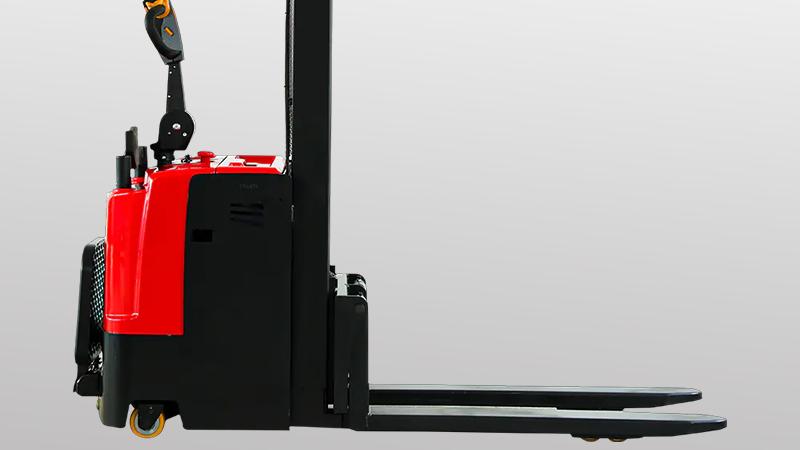The fundamental choice between a reach truck and a narrow aisle stacker for narrow aisle operations is a strategic decision that profoundly impacts a warehouse's storage density, operational throughput, and long-term financial performance. While both are engineered to function in aisles significantly narrower than those navigable by standard counterbalance forklifts, their core methodologies and resulting operational philosophies diverge considerably. A reach truck is characterized by its unique pantograph mechanism that allows the forks to "reach" forward into the storage racking, eliminating the need for the truck itself to enter the rack bay fully. This design permits operation in aisles as narrow as 2.5 to 2.7 meters, depending on load size. The machine remains stable on the main aisle floor, offering a familiar and often more comfortable operational experience for drivers transitioning from standard forklifts. In contrast, a narrow aisle stacker is a more specialized piece of equipment, often operating in aisles from 1.5 to 2.0 meters wide. It typically functions by moving on guided rails or wires embedded in the floor, which allows for extreme precision and stability at significant heights. The stacker itself travels within the aisle, with the operator either riding up with the load (in a man-up configuration) or controlling it from a fixed position at the end of the aisle. This fundamental distinction—reaching into the rack versus traveling within the rack—sets the stage for all subsequent comparisons regarding capability, efficiency, and cost.
When evaluating performance and application suitability, the superiority of one machine over the other is not absolute but is dictated by the specific warehouse workflow, SKU profile, and height objectives. Reach trucks excel in environments requiring high versatility and mixed task execution. They are not confined to a single aisle and can perform well in receiving, staging, and cross-docking tasks in addition to their primary put-away and retrieval functions. Their ability to handle a wide range of load weights and sizes, often up to 2.5 tons or more, makes them a robust, all-around solution for warehouses with diverse product lines. However, their storage density has a physical limit imposed by the aisle width they require. Narrow aisle stackers, by virtue of operating within the aisle, unlock the highest possible storage density. They are the unequivocal champions for very high-bay warehouses (exceeding 10-12 meters) where maximizing every cubic meter of space is paramount. The guided travel ensures perfect alignment, minimizes rack damage, and allows for safe, high-speed operation at elevation. Their throughput in a dedicated, high-volume picking or storing environment for uniform pallets can be exceptional, but they lack the flexibility to easily perform tasks outside their designated, guided aisles.
The financial analysis, encompassing both initial capital outlay and total cost of ownership, further delineates the target audience for each solution. Generally, a high-quality reach truck represents a lower initial investment compared to a sophisticated guided narrow aisle stacker. The infrastructure requirements for a reach truck are also less demanding; they require only a suitably strong and level concrete floor. This makes them an attractive and cost-effective solution for existing facilities being upgraded or for new warehouses with a constrained budget. Conversely, a narrow aisle stacker system necessitates a significant investment not only in the equipment itself, which is more complex technologically, but also in the supporting infrastructure. This includes the installation of guide rails or wires in every aisle and often requires a higher specification for racking integrity and floor flatness to ensure system-wide performance. While the capital expense is higher, the Return on Investment (ROI) justification for stackers comes from the dramatic increase in storage capacity within the same building footprint. For companies where real estate costs are exorbitant or where expansion is impossible, the super-dense storage enabled by stackers can deliver a faster ROI than one might anticipate, despite the higher upfront cost.
Ultimately, the verdict on which is better—a reach truck or a narrow aisle stacker—is a function of a meticulous operational audit and strategic business planning. The reach truck stands out as the champion of flexibility and lower initial cost, making it the ideal workhorse for multi-purpose warehouses with moderate height racking (typically under 10-12 meters), variable pallet types, and a need for equipment that can perform duties beyond just aisle work. It is a phenomenal tool for general logistics and distribution centers. The narrow aisle stacker, however, is the undisputed specialist for maximizing storage density and optimizing high-volume, high-speed operations in very narrow aisles. It is the superior choice for high-bay warehouses, cold storage facilities where space is at a premium, and operations dedicated to handling a high volume of similar pallets in a dedicated storage and retrieval workflow. Therefore, the "better" machine is the one that aligns perfectly with the company's core objectives: whether the priority is operational versatility and cost containment or the absolute maximization of storage space and dedicated-task throughput.
Post time:Nov.03.2025



